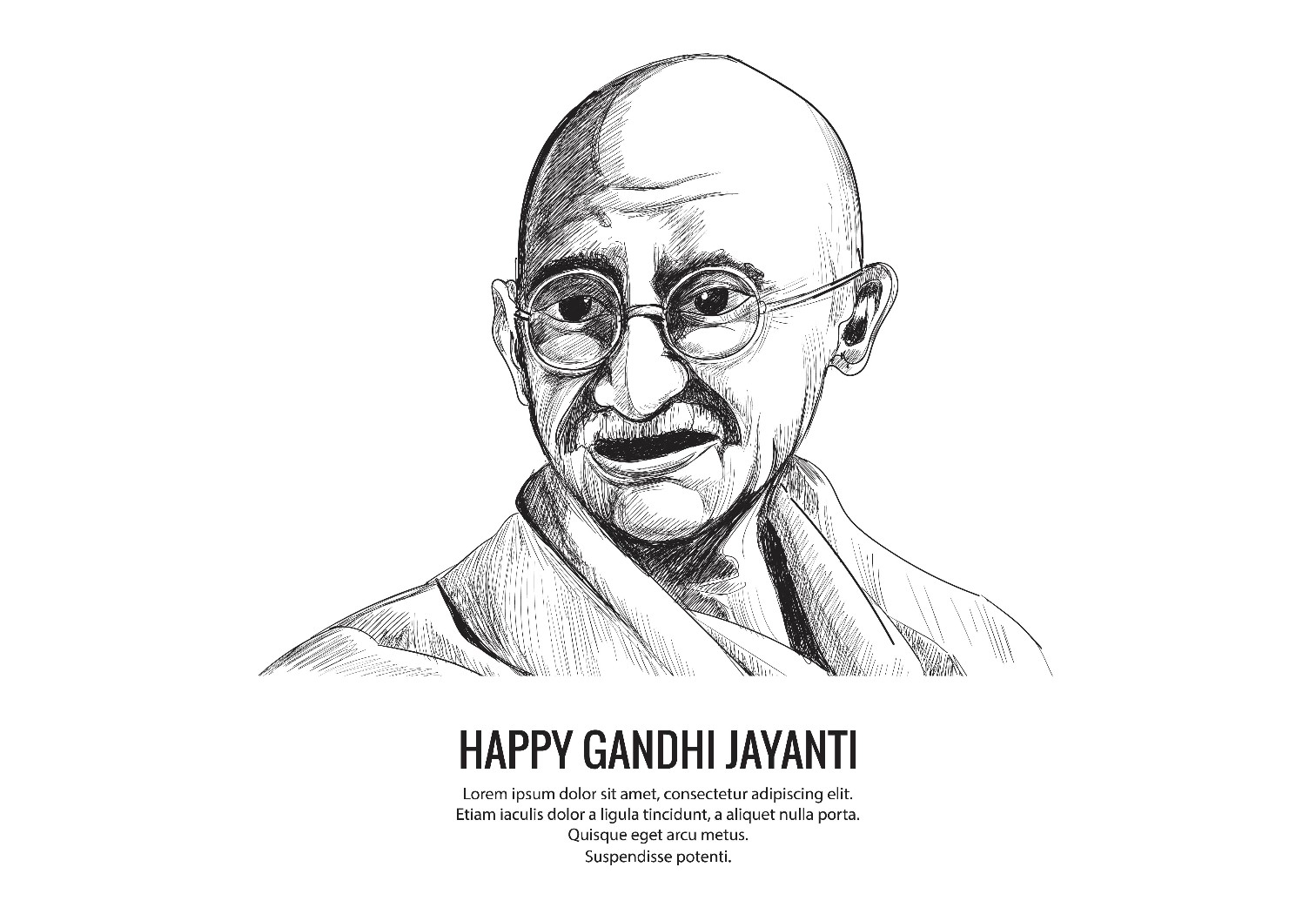Essay on mahatma Gandhi
“Welcome to ASKMORETOLEARNMORE, where knowledge is our compass and curiosity our guiding star. Join us on a journey of exploration, learning, and inspiration as we delve into the world of wisdom, In this post we will see Essay on mahatma Gandhi in English, Essay on mahatma Gandhi in Hindi.”
Table of Contents

Mahatma Gandhi: The Apostle of Peace and Non-Violence
Introduction:
Mahatma Gandhi, whose full name was Mohandas Karamchand Gandhi, is one of the most iconic figures in the history of the world. He is often referred to as the “Father of the Nation” in India, and his life and philosophy have left an indelible mark on the collective consciousness of humanity. Gandhi’s dedication to non-violence, his unwavering commitment to justice, and his tireless efforts to bring about social and political change have made him a symbol of peace, truth, and the enduring power of the human spirit.
In this essay, we will delve into the life and legacy of Mahatma Gandhi, exploring his early years, his transformative experiences, his role in the Indian independence movement, his philosophy of non-violence, and his influence on civil rights and social justice movements worldwide.
Early Life and Education:
Mohandas Karamchand Gandhi was born on October 2, 1869, in Porbandar, a coastal town in the western Indian state of Gujarat. He was born into a devout Hindu family, and his father, Karamchand Gandhi, served as the diwan (chief minister) of Porbandar. His mother, Putlibai, was a deeply religious woman who had a significant influence on Gandhi’s upbringing and moral values.
Gandhi’s early years were marked by a strong sense of ethics and moral principles. He was deeply influenced by the Jain religion, which advocated non-violence, truth, and self-discipline. These early influences laid the foundation for Gandhi’s later commitment to non-violence and his unwavering pursuit of truth.
At the age of 19, Gandhi traveled to London to study law, and he subsequently pursued his legal career in South Africa. It was during his time in South Africa that he first experienced the overt racial discrimination and injustice that would propel him into the forefront of social and political activism.
Experiences in South Africa:
Gandhi arrived in South Africa in 1893, intending to work as a lawyer. However, it was in South Africa that he first encountered the harsh realities of racial discrimination and prejudice. Despite his education and professional credentials, Gandhi was subjected to racial segregation, including being evicted from a first-class train compartment in Pietermaritzburg because of his skin color. These experiences of discrimination and injustice deeply affected him and marked the beginning of his commitment to fighting social and political inequalities.
In South Africa, Gandhi became a prominent leader in the Indian community and initiated several campaigns against the discriminatory laws imposed by the colonial government. His methods of non-violent resistance, which he would later term as “Satyagraha” (a combination of “Satya” meaning truth and “Agraha” meaning insistence), were tested and refined during these early struggles. Satyagraha became the cornerstone of his philosophy and his approach to seeking justice and change.
Gandhi’s time in South Africa was instrumental in shaping his vision and approach to social and political activism. He became a firm believer in the power of truth and non-violence as the most potent tools for bringing about change and justice.
Return to India and the Indian Independence Movement:
In 1915, after over two decades in South Africa, Gandhi returned to India. His return marked a turning point in the history of India’s struggle for independence. Gandhi quickly emerged as a prominent leader in the Indian National Congress and played a central role in the fight against British colonial rule.
Gandhi’s philosophy of non-violence was integral to the Indian independence movement. He believed that violence could never lead to lasting change or true freedom. Instead, he advocated passive resistance, civil disobedience, and non-cooperation as means to challenge unjust laws and demand independence. Some of the significant campaigns he led included:
Champaran and Kheda Satyagraha: In Champaran, Bihar, and Kheda, Gujarat, Gandhi led agitations against the unfair treatment of indigo farmers and the British government’s refusal to provide relief during a drought. These movements highlighted the power of non-violent protest and civil disobedience.
Non-Cooperation Movement: In 1920, Gandhi launched the Non-Cooperation Movement, urging Indians to boycott British institutions, including schools, courts, and government functions. Millions of people participated in this campaign, emphasizing the strength of non-violent resistance.
Civil Disobedience Movement: The Civil Disobedience Movement, which began in 1930 with the famous Dandi March, was another significant milestone in India’s struggle for independence. Gandhi and his followers marched to the Arabian Sea and made salt by evaporating seawater, in defiance of the British monopoly on salt production.
Quit India Movement: In 1942, Gandhi called for the Quit India Movement, demanding the immediate withdrawal of the British from India. This movement saw widespread civil disobedience and led to mass arrests.
Gandhi’s leadership during these campaigns and his steadfast commitment to non-violence played a pivotal role in building a mass movement for Indian independence. His philosophy, characterized by truth, non-violence, and civil resistance, inspired millions of Indians to join the struggle.
Principles of Non-Violence (Satyagraha):
Gandhi’s philosophy of non-violence, which he termed Satyagraha, was central to his approach to social and political change. It was based on the following principles:
Truth (Satya): Gandhi believed that truth was the highest virtue and that individuals should always strive for truth in their actions, thoughts, and words. He considered the search for truth to be a fundamental part of the human journey.
Non-Violence (Ahimsa): Non-violence was the cornerstone of Gandhi’s philosophy. He believed that violence was fundamentally incompatible with truth and that individuals should avoid harming others physically, mentally, or emotionally.
Resistance to Injustice: Satyagraha involved the passive resistance to injustice. It was a method of standing up against oppression and discrimination, even in the face of violence, without using violence in return.
Love and Forgiveness: Gandhi advocated love and forgiveness as powerful tools for resolving conflicts and for transforming enemies into friends. He believed that hatred and anger perpetuated cycles of violence and division.
Non-Cooperation: Non-cooperation with unjust systems and laws was a key aspect of Satyagraha. It involved refusing to participate in activities that supported oppressive regimes.
Civil Disobedience: Civil disobedience, a form of non-violent protest, involved breaking unjust laws and accepting the legal consequences in order to highlight their injustice.
Self-Sacrifice: Gandhi believed in self-sacrifice as a means of demonstrating one’s commitment to a just cause. He often engaged in hunger strikes and other forms of self-sacrifice to draw attention to the issues he was addressing.
Gandhi’s philosophy of Satyagraha was a powerful force for social and political change. It demonstrated that non-violent resistance could be a more effective and morally sound method for addressing injustices than violence.
Influence on Civil Rights Movements Worldwide:
Mahatma Gandhi’s philosophy and methods of non-violent resistance had a profound impact not only on the Indian independence movement but also on civil rights and social justice movements worldwide. His ideas inspired leaders like Martin Luther King Jr. and Nelson Mandela, who adopted similar principles in their quests for justice.
Martin Luther King Jr.: Martin Luther King Jr. was heavily influenced by Gandhi’s philosophy of non-violence. He incorporated non-violent resistance into the American civil rights movement, leading campaigns like the Montgomery Bus Boycott and the March on Washington. King’s leadership and commitment to non-violence played a pivotal role in the advancement of civil rights in the United States.
Nelson Mandela: Nelson Mandela, the anti-apartheid leader and former President of South Africa, was also inspired by Gandhi’s principles of non-violence. He embraced non-violent resistance in his early activism and later became a symbol of reconciliation and peaceful transition in the dismantling of apartheid.
Gandhi’s legacy extends far beyond his role in India’s independence movement. His philosophy of non-violence, civil resistance, and the pursuit of truth continues to be a source of inspiration for movements advocating for justice, equality, and social change worldwide.
Assassination and Legacy:
Tragically, Mahatma Gandhi’s life was cut short when he was assassinated on January 30, 1948, by Nathuram Godse, a Hindu nationalist who disagreed with Gandhi’s principles and politics. His death was a devastating loss for India and the world, as it marked the end of an era of non-violence and principled leadership.
Gandhi’s legacy, however, endures. His teachings, principles, and vision for a just and inclusive society continue to inspire and guide individuals and movements globally. Some key aspects of his legacy include:
A Symbol of Peace: Gandhi remains a global symbol of peace and non-violence. His life and actions have left an indelible mark on the quest for a more peaceful world.
Human Rights and Social Justice: Gandhi’s commitment to justice and human rights paved the way for many movements that advocate for civil rights, social justice, and equality.
International Day of Non-Violence: In 2007, the United Nations declared October 2, Gandhi’s birthday, as the International Day of Non-Violence, recognizing his role in promoting non-violence and peace.
Inspirational Leader: Gandhi’s life and philosophy continue to inspire leaders, activists, and individuals worldwide to work toward justice, truth, and non-violence in their own contexts.
Relevance in Contemporary Issues: Gandhi’s teachings remain relevant in addressing contemporary issues such as violence, discrimination, environmental sustainability, and social justice.
Conclusion:
Mahatma Gandhi, the Apostle of Peace and Non-Violence, left an indelible mark on the world with his unwavering commitment to truth, non-violence, and justice. His life’s journey, from his early years in Porbandar to his transformative experiences in South Africa and his central role in the Indian independence movement, was marked by a profound dedication to principles that continue to inspire people today.
Gandhi’s philosophy of Satyagraha, rooted in truth and non-violence, became a powerful tool for addressing injustices and advancing social and political change. His influence extended far beyond India, inspiring leaders like Martin Luther King Jr. and Nelson Mandela in their quests for justice and equality.
While Gandhi’s life was tragically cut short by an assassin’s bullet, his legacy endures as a symbol of peace, truth, and the enduring power of the human spirit. His teachings remain relevant and continue to guide individuals and movements in their pursuit of a more just and peaceful world. Gandhi’s life and philosophy remind us that non-violence and the pursuit of truth are not mere ideals but potent tools for transforming society and creating lasting change.
Essay on mahatma Gandhi in Hindi
महात्मा गांधी पर निबंध:
महात्मा गांधी का नाम देशवासियों के लिए एक पवित्र और प्रेरणास्त्रोत है। उन्होंने भारतीय स्वतंत्रता संग्राम को एक नई दिशा दी और अहिंसा के सिद्धांतों पर आधारित आंदोलन चलाकर देश को स्वतंत्रता दिलाने का संदेश दिया।
महात्मा गांधी का जन्म 2 अक्टूबर 1869 को पोरबंदर, गुजरात में हुआ था। उनका पूरा नाम मोहनदास करमचंद गांधी था। उनके पिता का नाम करमचंद गांधी था और माँ का नाम पुतलीबाई था। उन्होंने अपनी शिक्षा की आरंभिक शिक्षा पोरबंदर में प्राप्त की और फिर इंग्लैंड गए जहां उन्होंने कानून की पढ़ाई की।
गांधीजी ने अपने जीवन में अहिंसा, सत्य, आत्मनिर्भरता, आंदोलन, विवेकानंद और आदि जैसे महान आदर्शों का पालन किया। उन्होंने बारम्बार जनता के बीच जाकर गांधीजी ने अन्याय और दुर्भाग्य के खिलाफ आंदोलन चलाया। उन्होंने भारतीय स्वतंत्रता संग्राम में अहिंसा के सिद्धांतों का पालन करते हुए जनता को एकजुट किया और ब्रिटिश साम्राज्य के खिलाफ संघर्ष किया।
गांधीजी ने सात्याग्रह, नमक सत्याग्रह, आंदोलन, असहमति का व्यक्तिगत स्वरूप, खिलफत आंदोलन, आदि कई आंदोलन चलाए जिनसे उन्होंने लाखों लोगों को जागरूक किया और स्वतंत्रता की ओर अग्रसर किया। उनके नेतृत्व में चले गए आंदोलनों ने देश को स्वतंत्रता दिलाने में महत्वपूर्ण भूमिका निभाई।
महात्मा गांधी का आदर्श आज भी हमारे समाज में महत्वपूर्ण हैं। उनकी बातों और आदर्शों से हमें सच्ची स्वतंत्रता की महत्वता समझने में मदद मिलती है। उनकी नियमित आचरण और अहिंसा के सिद्धांतों पर आधारित जीवन जीने से हम समाज में शांति, समृद्धि और सामाजिक एकता की दिशा में कदम बढ़ा सकते हैं।
We sincerely appreciate your time and interest in our content Essay on mahatma Gandhi. Your support means the world to us, and we’re thrilled that you chose to visit our page.
At AskXYZ, we’re committed to delivering valuable and engaging content. We want to ensure that your experience with us is exceptional. That’s why we invite you to explore more of our posts/articles. We’re confident you’ll find something that piques your interest.
Your feedback is incredibly important to us. It helps us understand what you love and how we can improve. Please take a moment to share your thoughts or suggestions. We’re all ears!
Explore our other posts/articles and share your feedback with us .






